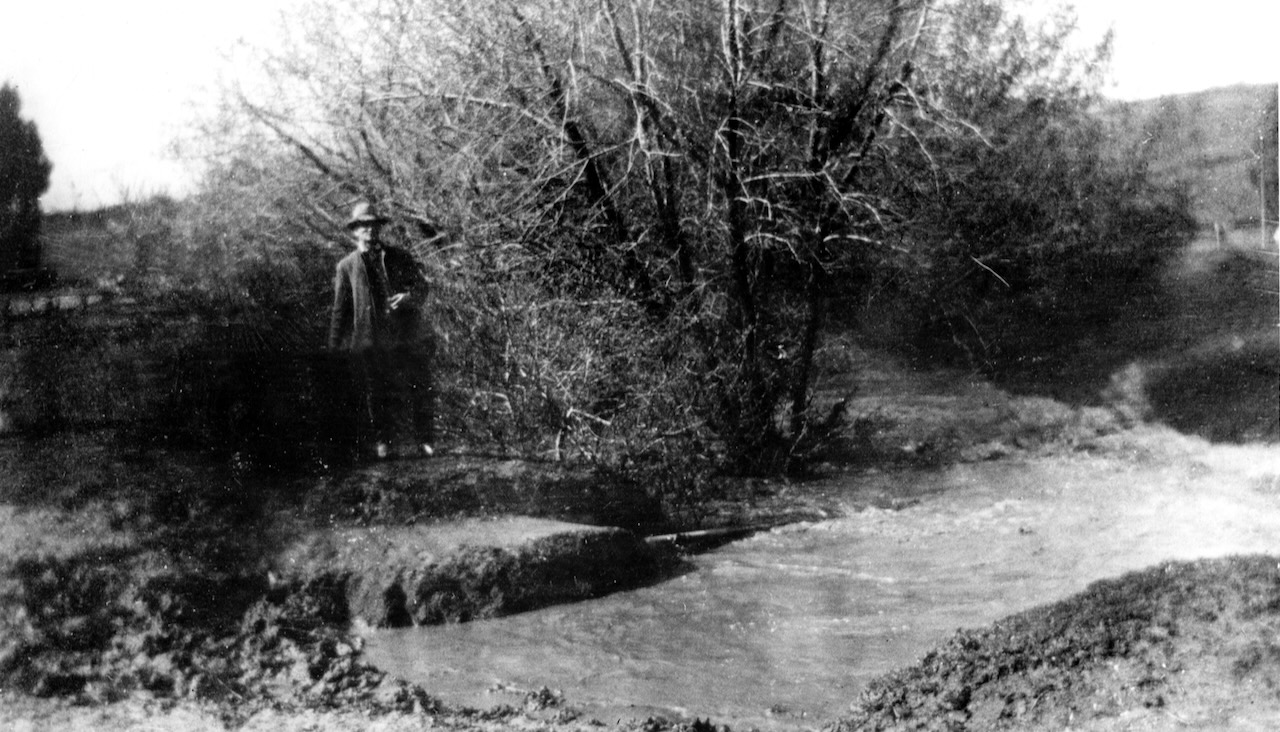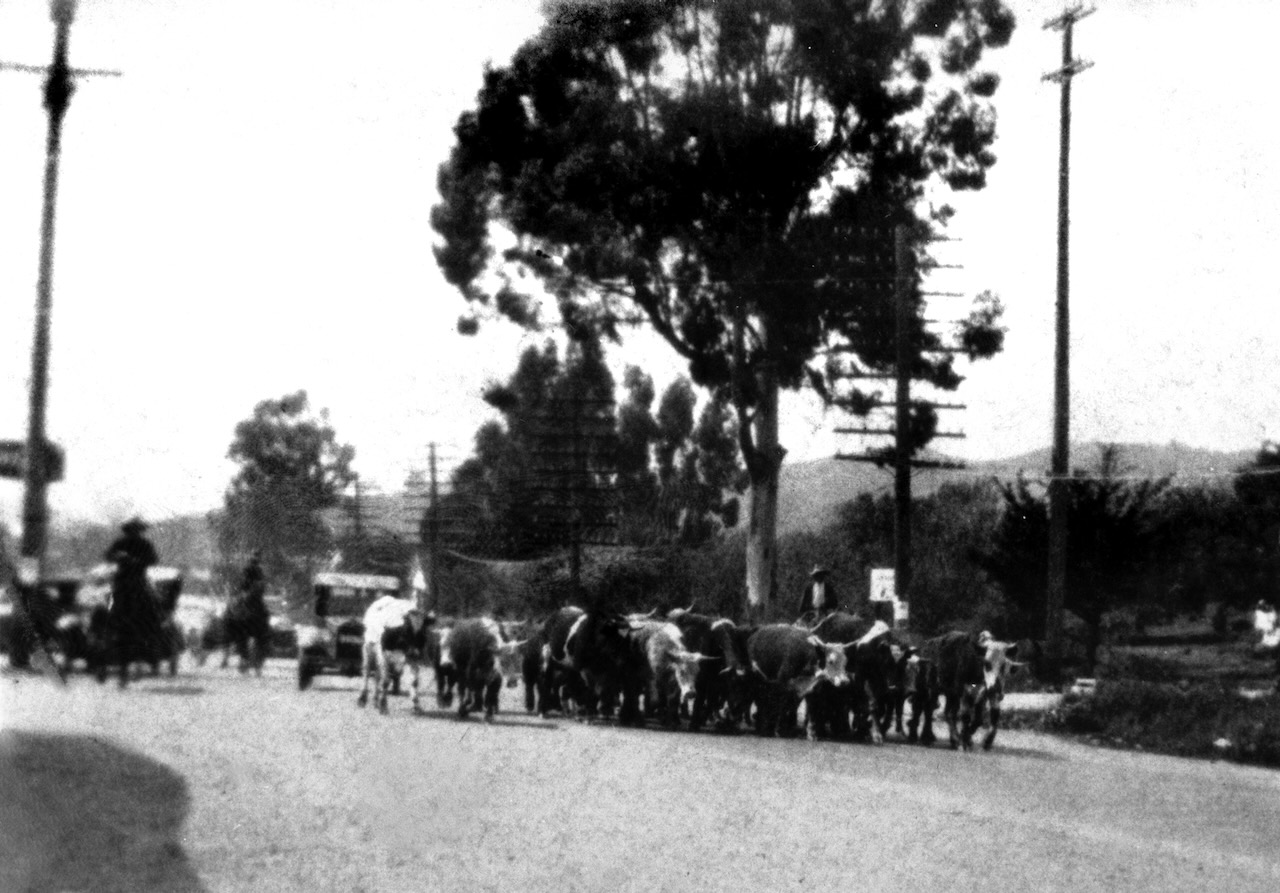The tall, wild grasses growing up the valleys of the Rancho Acalenes had spelled fertile farmland to the sharp eyes of Elam Brown as he searched for a new homestead. His first recorded agricultural success was in 1850 when a former cattle corral strewn with barley produced a bountiful crop of about 105 bushels per acre. Like most of arable Contra Costa County, the Lafayette area was to become a prime grain growing center and its inhabitants primarily farmers.
As late as 1884 a newspaper ad boasted: “Fine general farm of 103 acres, prettily located near Lafayette.” Another observer wrote: “Today the whole face of the arable part is one waving field of grain…” Vineyards, pear orchards and vegetable gardens were everywhere, and cattle, horses and sheep were important to the pioneer economy. Brown even experimented with growing Chinese sugar cane, largely for late summer and autumn forage for his cattle. He wrote enthusiastically: “No other known plant, at present cultivated or grown within the limits of California, can equal it.”
By 1859 a County Agricultural Society had been convened in Lafayette with the initial county fair taking place October 11 of that year. Always a leader, Brown was a member of the organizing committee.

A mottled brown book with fading ink recording transactions made by Elam Brown at his grist mill beginning January 8, 1859, is a treasured memento of Lafayette’s early farming days. Now kept in the vault at the Pleasant Hill Central Library, the old volume notes bills paid, money advanced to customers, accounts of hay and beef hides sold.
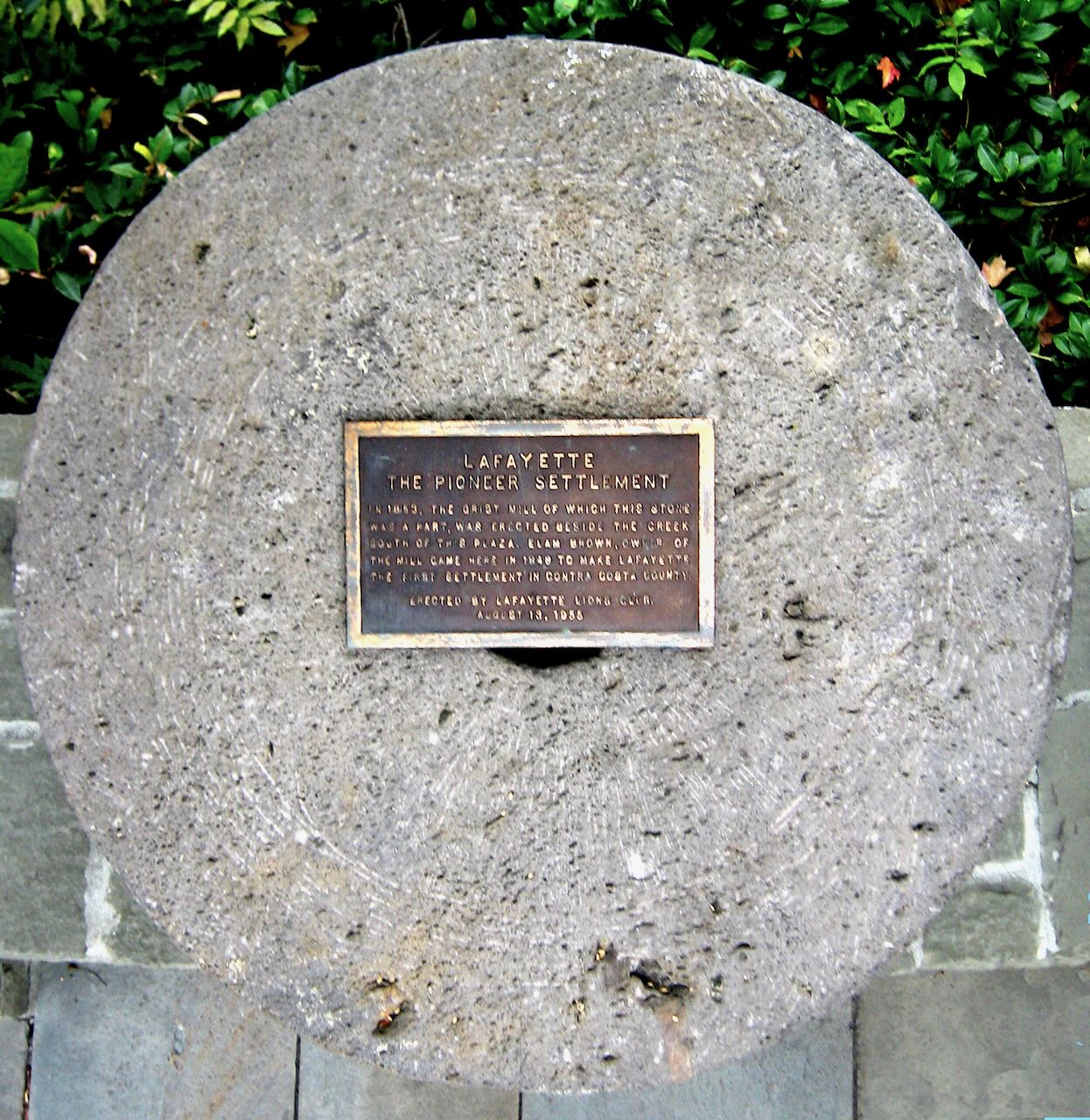
Hailed as the first man of industry in the village and possibly in the county, Elam Brown established a horse-drawn grist mill. This eliminated a time-consuming trip to San Jose for local farmers wishing to have wheat and barley converted to flour. The mill, located on Lafayette Creek near modern First Street, was set up in 1853. One of the wheels from this old mill, which was dismantled and moved to Modesto in 1880, was embedded in the wall of the Lafayette Plaza in 1955 as a memorial to town founder Brown.
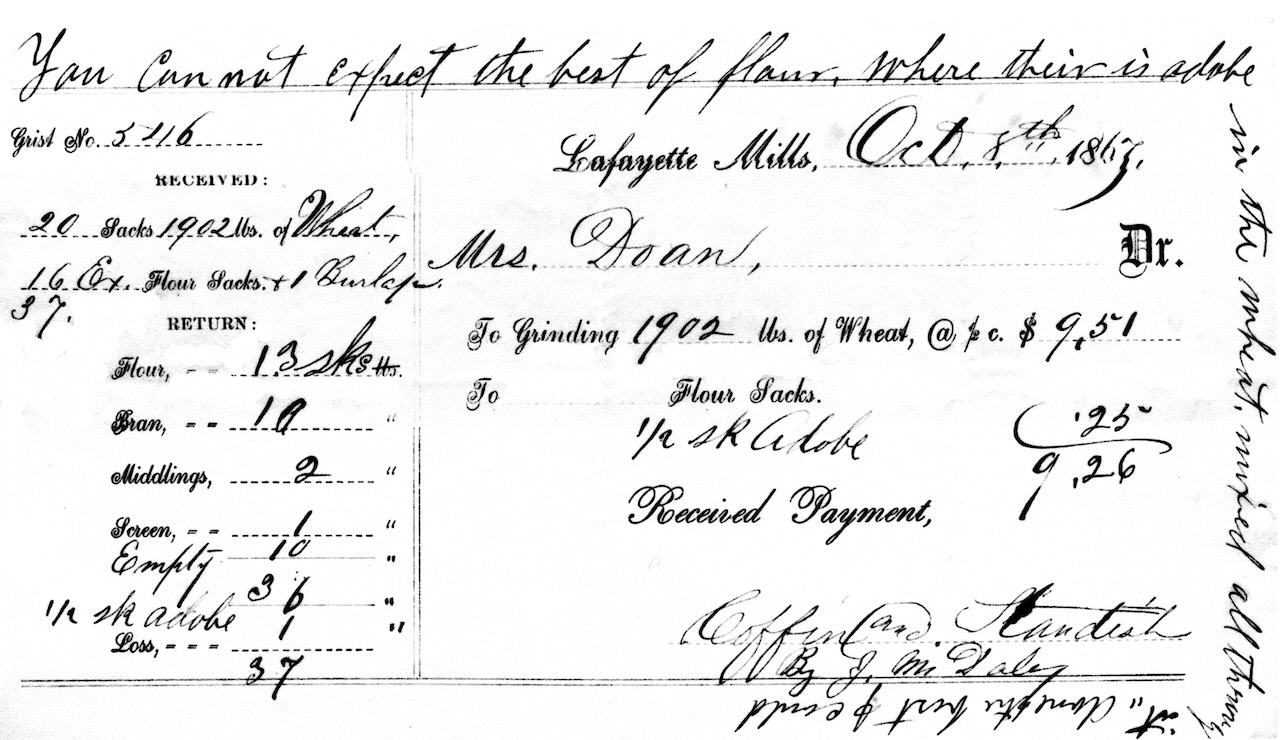
Lafayette’s infamous “adobe” soil was a problem for the early farmers as recorded in the handwritten comments around this 1867 Lafayette Mills receipt. Wrote the clerk: “You can not expect the best of flour where there is adobe in the wheat, mixed all through it ‘done the best I could’.” The receipt also indicates that twenty-five cents was deducted from the total bill for “1/2 sk. adobe”.
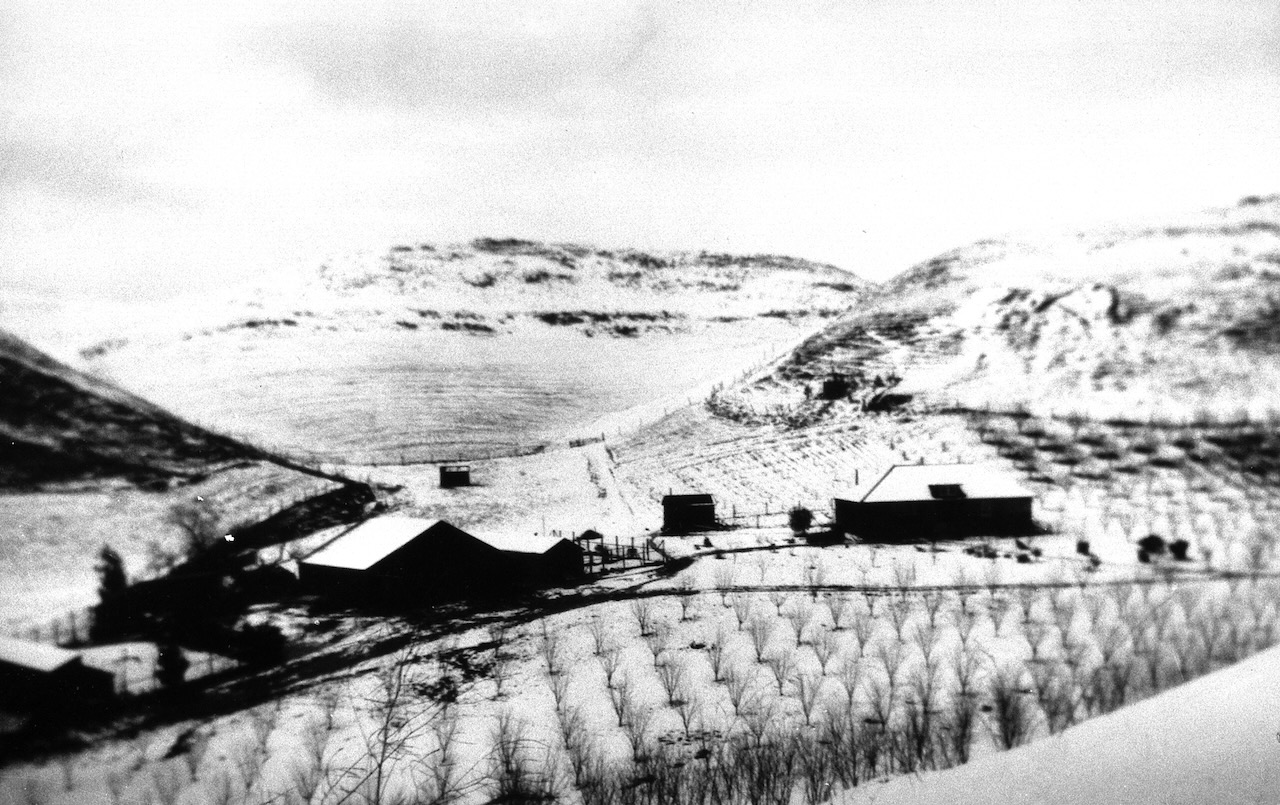
In 1915 Louis L. Stein, Sr. bought a ranch just east of the present Acalanes High School. The land and ranch buildings are shown following a rare snow storm in 1922.
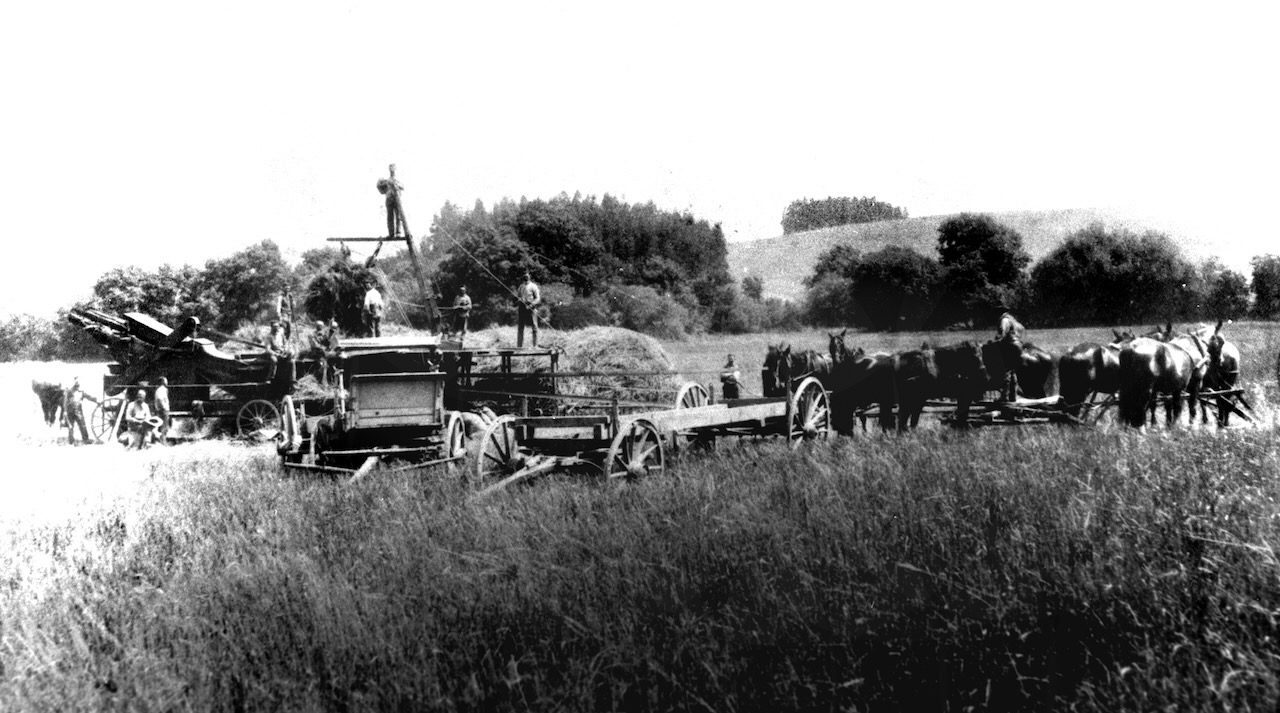
Farming was still the basic pursuit in Lafayette in the early 1900’s. Here a crew harvests hay for a local farmer named Dunn.

